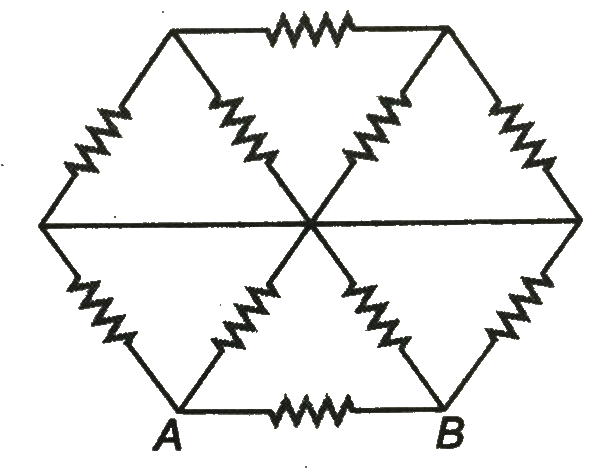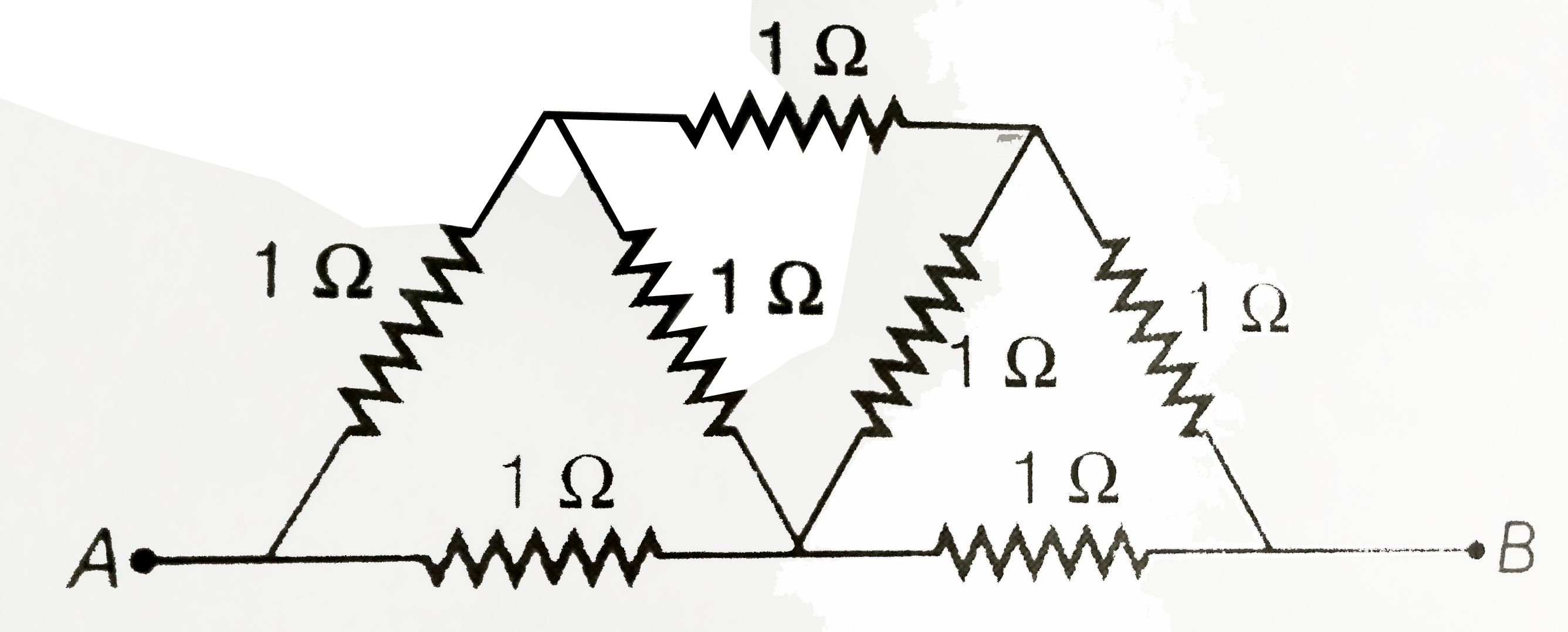In the network shown in figure, each resistance is R. The equvalent resistance between points A and B is

2011R
1911R
815R
R2
The correct Answer is:D
Equivalent resistance - 
Topper's Solved these Questions
- CURRENT ELECTRICITYBOOK - DC PANDEY ENGLISHCHAPTER - CURRENT ELECTRICITYEXERCISE - OBJECTIVE_TYPE
1 Video
- CURRENT ELECTRICITYBOOK - DC PANDEY ENGLISHCHAPTER - CURRENT ELECTRICITYEXERCISE - Level 1 Subjective
53 Videos
- CURRENT ELECTRICITYBOOK - DC PANDEY ENGLISHCHAPTER - CURRENT ELECTRICITYEXERCISE - Level 1 Assertion And Reason
11 Videos
- COMMUNICATION SYSTEMBOOK - DC PANDEY ENGLISHCHAPTER - COMMUNICATION SYSTEMEXERCISE - Subjective
11 Videos
- ELECTROMAGNETIC INDUCTIONBOOK - DC PANDEY ENGLISHCHAPTER - ELECTROMAGNETIC INDUCTIONEXERCISE - Medical entrances gallery
25 Videos
Similar Questions
In the network shown in fig. each resistance is R.

The equivalent resistance between A and C is
View SolutionIn the netwrok shown in fig. each resistance is R.

The equivalent resistance between A and B is
View SolutionIn the netwrok shown in fig. each resistance is R.

The equivalent resistance between A and G is
View SolutionIn the circuit shown in figure, each resistance is Net resistance between points A and B is

View SolutionIn the network shown in figure each resistance is 1Ω . The effective resistance between A and B is

View SolutionFind the equvalent Resistance between A and B

View SolutionIn the network shown, each resistance is R. Calculate the equivalent resistance between A and B.

View SolutionIn the adjoining network of resistors, each is of resistance r ohm, the equivalent resistance between points A and B is–

View SolutionWhat is the equivalent resistance between the points A and B of the network?

View SolutionConsider the following statements regarding the network shown in the figure.

The eqivalent resistance of the network between points A and B is independent of value of G.
The equivalent resistance of the network between points A and B is 4/3R.
The current through G is zero.
Which of the above statements(s) is/are true?
View Solution